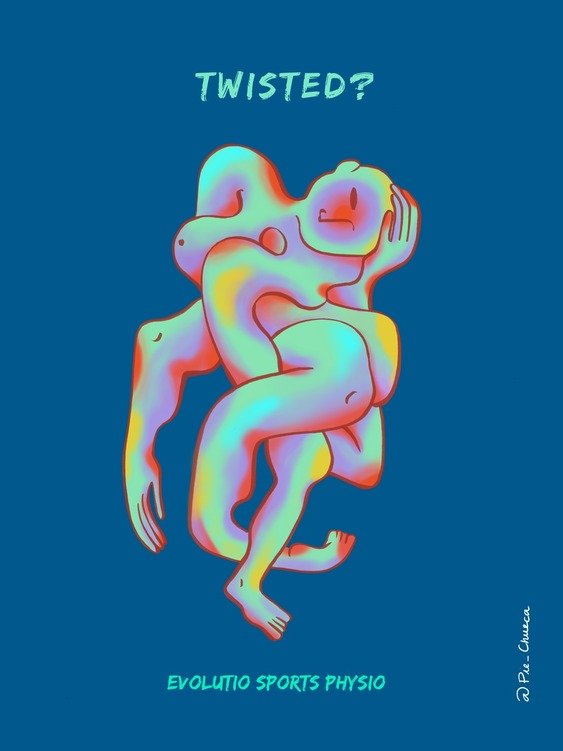Can Carpal Tunnel Cause Elbow Pain?
Are you wondering can carpal tunnel cause elbow pain? Well, Carpal tunnel syndrome (CTS) primarily involves compression of the median nerve as it passes through the narrow carpal tunnel in the wrist. However, the symptoms of CTS can extend beyond the wrist and affect areas along the path of the median nerve. The median nerve originates from the brachial plexus in the neck and travels down the arm, passing through the carpal tunnel and into the hand. Compression or irritation of the median nerve can lead to symptoms such as pain, tingling, and numbness not only in the hand but also in the forearm and sometimes extending up to the elbow.
When carpal tunnel syndrome progresses or is left untreated over extended periods of time, it can lead to referred pain that radiates to the elbow. The pain may extend beyond the wrist, affecting the forearm upper arm regions. This occurs because the median nerve communicates with other nerves in the arm, and the brain may interpret the signals as pain or discomfort in areas beyond the immediate site of compression.
It's important to note that while carpal tunnel syndrome can contribute to elbow pain, other potential causes for elbow pain should be considered. These may include conditions such as tennis elbow (lateral epicondylitis), golfer's elbow (medial epicondylitis), nerve impingement at the cervical spine, or other musculoskeletal disorders. Therefore, a comprehensive evaluation by a healthcare professional is crucial to accurately diagnose the source of elbow pain and determine the appropriate course of treatment.
Furthermore, if carpal tunnel or elbow pain is left untreated for extended periods of time, it can lead to other pain and issues ranging from neck pain, to shoulder dysfunction, to neural pain in the arm. This is due to compensatory movement techniques and pain avoidance techniques.
Why else can Carpal Tunnel cause Elbow Pain?
The other reasons answer to the question can carpal tunnel cause elbow pain centre around the nervous system in the body. Carpal tunnel syndrome (CTS) primarily affects the wrist, but its symptoms can extend beyond this area due to the interconnected network of nerves in the arm. One reason for elbow pain associated with CTS is the concept of referred pain. When the median nerve, which is compressed in the carpal tunnel, experiences irritation or compression, the brain may interpret these signals as pain in the wrist and along the nerve pathway, including the forearm and elbow. This referred pain phenomenon can create a perception of discomfort in areas beyond the immediate site of compression.
Moreover, individuals with CTS may alter their hand and arm movements to alleviate pain or discomfort, inadvertently putting additional strain on the muscles and joints, including the elbow. Repetitive or awkward movements can contribute to overuse injuries and strain, leading to pain in adjacent areas like the elbow. Additionally, swelling and inflammation associated with carpal tunnel syndrome can affect surrounding tissues and exacerbate symptoms. The inflammation may extend along the course of the median nerve, contributing to pain and discomfort in the forearm and potentially reaching the elbow.
It's important to recognize that while carpal tunnel can cause elbow pain, other coexisting or alternative conditions may be present. A comprehensive examination by a healthcare professional, possibly including nerve conduction studies or imaging, can help determine the precise cause of symptoms and guide an appropriate treatment plan.
So How Can Carpal Tunnel cause Elbow Pain?
The nerves in the arm are interconnected, and irritation or compression of the median nerve in the carpal tunnel can sometimes cause referred pain to other areas, including the elbow. This phenomenon occurs because the nerves from the hand and wrist merge and travel together through the arm, sharing pathways with other nerves. Consequently, the brain may interpret the signals as originating from the elbow even though the issue is in the wrist. This referred pain can be experienced as aching, tingling, or discomfort in the elbow, contributing to the overall discomfort associated with carpal tunnel syndrome.
What can feel like Carpal Tunnel but isn’t?
Several conditions can mimic the symptoms of carpal tunnel syndrome (CTS), making it essential to consider alternative diagnoses. One common culprit is cubital tunnel syndrome, which involves compression or irritation of the ulnar nerve at the elbow. Symptoms may include tingling, numbness, and pain radiating into the ring and little fingers. The ulnar nerve compression can be exacerbated by activities that involve bending the elbow, such as prolonged phone use or resting the elbow on a hard surface.
Another condition to consider is thoracic outlet syndrome (TOS), which involves compression of nerves or blood vessels as they pass through the thoracic outlet, located between the collarbone and the first rib. TOS symptoms can include hand and arm pain, numbness, and tingling, often exacerbated by activities that involve overhead arm positions.
Arthritis, especially osteoarthritis or rheumatoid arthritis, can also cause hand and wrist pain similar to CTS. Inflammatory arthritis can lead to joint swelling, stiffness, and pain that may be mistaken for carpal tunnel symptoms. Additionally, tendonitis, involving inflammation of the tendons in the wrist or hand, can produce pain, swelling, and discomfort that may be confused with CTS.
Lastly, referred pain from the neck or upper back, possibly due to cervical radiculopathy or other spinal issues, can present as symptoms in the hands and wrists. Conditions affecting the cervical nerves may cause pain, numbness, and tingling sensations in the arms and hands, mimicking carpal tunnel symptoms. Accurate diagnosis by a healthcare professional is crucial to differentiate between these conditions and ensure appropriate treatment.




